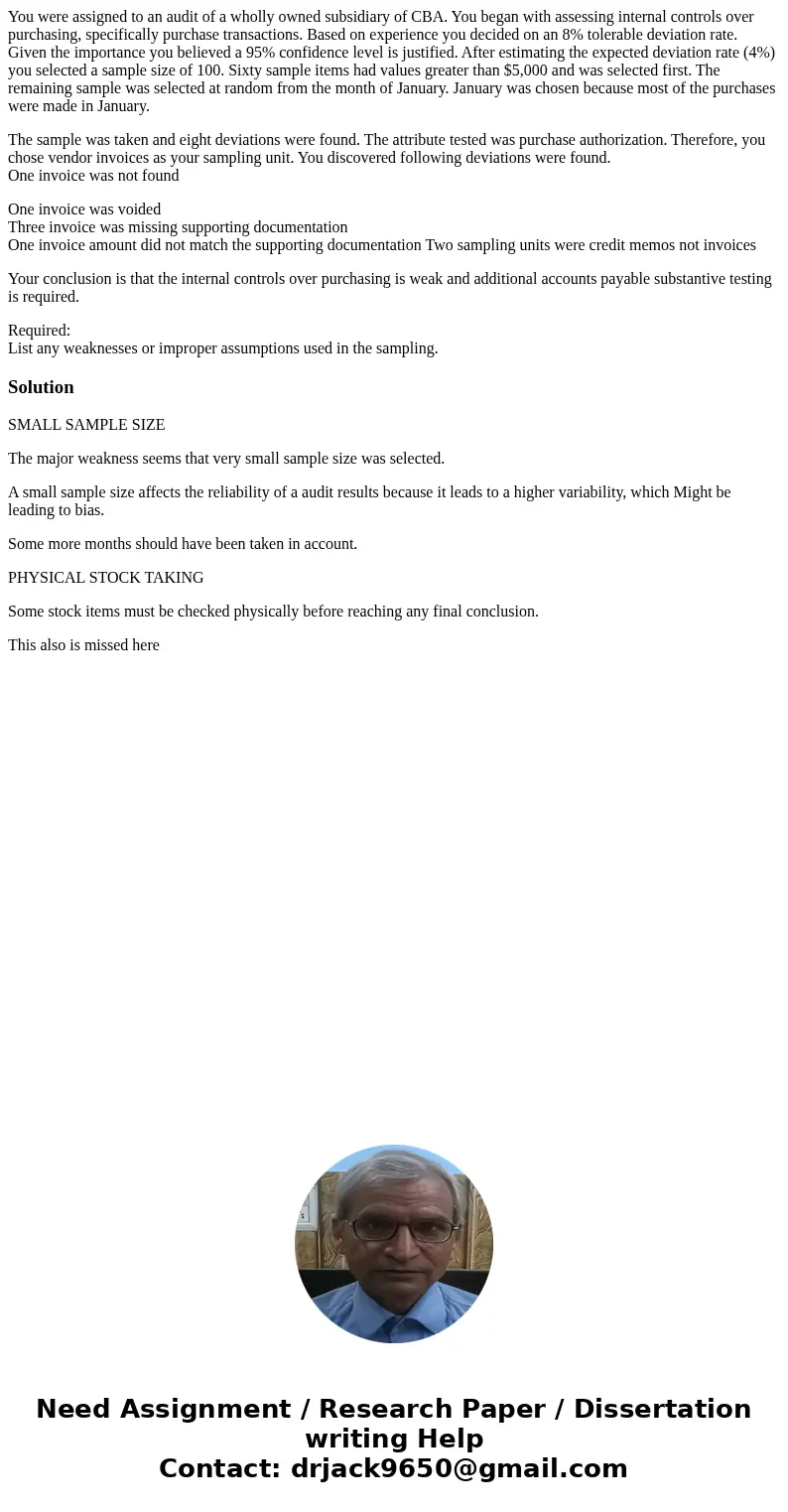You were assigned to an audit of a wholly owned subsidiary o
You were assigned to an audit of a wholly owned subsidiary of CBA. You began with assessing internal controls over purchasing, specifically purchase transactions. Based on experience you decided on an 8% tolerable deviation rate. Given the importance you believed a 95% confidence level is justified. After estimating the expected deviation rate (4%) you selected a sample size of 100. Sixty sample items had values greater than $5,000 and was selected first. The remaining sample was selected at random from the month of January. January was chosen because most of the purchases were made in January.
The sample was taken and eight deviations were found. The attribute tested was purchase authorization. Therefore, you chose vendor invoices as your sampling unit. You discovered following deviations were found.
One invoice was not found
One invoice was voided
Three invoice was missing supporting documentation
One invoice amount did not match the supporting documentation Two sampling units were credit memos not invoices
Your conclusion is that the internal controls over purchasing is weak and additional accounts payable substantive testing is required.
Required:
List any weaknesses or improper assumptions used in the sampling.
Solution
SMALL SAMPLE SIZE
The major weakness seems that very small sample size was selected.
A small sample size affects the reliability of a audit results because it leads to a higher variability, which Might be leading to bias.
Some more months should have been taken in account.
PHYSICAL STOCK TAKING
Some stock items must be checked physically before reaching any final conclusion.
This also is missed here

 Homework Sourse
Homework Sourse